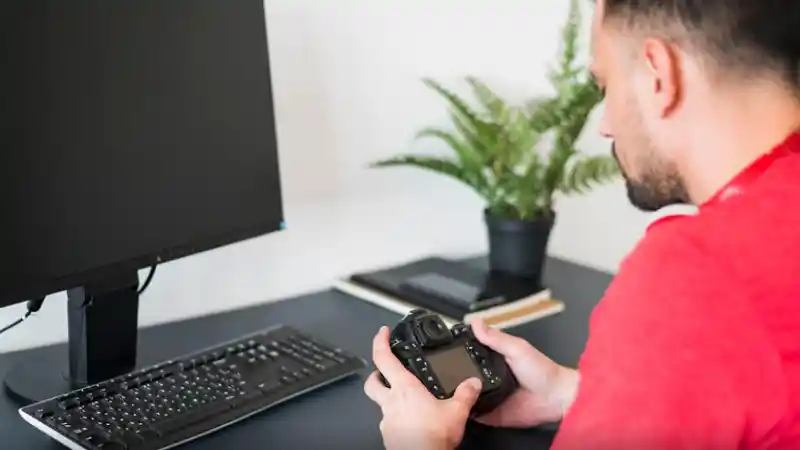In today’s increasingly digital world, remote access tools have become essential for both personal and professional environments. They allow individuals and teams to access computers and servers from any location, regardless of physical distance. Among the most popular remote access tools is AnyDesk, which is widely used for its simplicity, performance, and security features. However, if you’re facing issues or need additional troubleshooting, resources like Abrams and BleepingComputer can be invaluable.
In this article, we will explore the steps to effectively use remote access software like AnyDesk, provide solutions to common problems, and introduce valuable resources such as Abrams and BleepingComputer to help resolve issues efficiently.
What Is Remote Access and Why Is It Important?
Remote access allows users to connect to computers or networks remotely over the internet or other networks. With remote access tools, users can operate their systems, troubleshoot issues, or retrieve files from any location as if they were sitting right in front of the machine. This technology is crucial for IT professionals, businesses, remote workers, and even individuals needing support for personal devices.
Some key benefits of remote access include:
- Increased productivity: You can continue working from home or any other location.
- Instant support: Remote troubleshooting and technical support can be offered instantly without the need for on-site visits.
- Cost savings: Companies can reduce travel costs by providing remote IT support.
An Overview of AnyDesk
AnyDesk is a remote desktop software tool that allows users to access a computer remotely, even over a low-bandwidth connection. It provides a smooth and secure connection with high frame rates and low latency. Whether you are providing IT support, accessing files, or using your work computer from home, AnyDesk is a powerful and reliable tool to get the job done.
Key features of AnyDesk include:
- Cross-platform compatibility: AnyDesk works across multiple platforms, including Windows, macOS, Linux, and mobile devices.
- File transfer capabilities: Users can easily transfer files between local and remote computers.
- Security: End-to-end encryption ensures that your data remains secure.
- Customization: It offers customization options for businesses to align with their specific remote support needs.
Installing and Using AnyDesk
Here’s a quick guide to getting started with AnyDesk:
- Download and Install: Visit the AnyDesk website and download the appropriate version for your device. Install the application on both the local and remote devices.
- Set Up and Create an Account (Optional): While it is possible to use AnyDesk without an account, creating one will allow you to access your devices more easily. After installation, open the program, and you will be given a unique AnyDesk ID.
- Connect to a Remote Device: To establish a remote connection, simply share your AnyDesk ID with the person you wish to connect to, or enter the remote device’s AnyDesk ID to initiate the connection. Ensure the remote user grants permission to accept the incoming connection.
- Control the Remote Device: Once connected, you will have full control of the remote computer. You can access files, run applications, or assist with troubleshooting.
Troubleshooting AnyDesk Issues
While AnyDesk is generally reliable, users may occasionally encounter problems. Here are some common issues and practical steps for resolving them:
1. Connection Problems
Problem: You cannot connect to the remote device, or the connection drops unexpectedly.
Solutions:
- Check internet connection: Both the local and remote devices must have a stable internet connection. Ensure both are connected to the internet with sufficient bandwidth.
- Firewall settings: Ensure that AnyDesk is not being blocked by a firewall. Add AnyDesk to the list of allowed applications if necessary.
- Update AnyDesk: Ensure both devices are using the latest version of AnyDesk. Outdated versions may cause compatibility issues.
2. Audio or Video Lag
Problem: The screen display is laggy, or the audio is choppy during the session.
Solutions:
- Lower the resolution: In the AnyDesk settings, try reducing the display resolution to improve performance, especially if you are using a low-bandwidth network.
- Check system resources: Close unnecessary applications on both the local and remote devices to free up system resources.
- Enable “Optimize for Low Latency”: This option in the settings can help reduce lag, particularly when working over slower networks.
3. Black Screen or Display Issues
Problem: The remote screen appears black or displays incorrectly.
Solutions:
- Reboot the remote computer: Sometimes, restarting the device can resolve display issues.
- Disable hardware acceleration: In the AnyDesk settings, disable hardware acceleration on both the local and remote devices to avoid rendering issues.
4. Audio Not Working
Problem: You cannot hear anything from the remote device or vice versa.
Solutions:
- Check audio settings: Make sure both devices have the audio output enabled and are not muted.
- Update drivers: Ensure the audio drivers on both the local and remote devices are up-to-date.
- Reboot the devices: Restarting both devices can help resolve temporary audio problems.
Additional Resources: Abrams and BleepingComputer
For advanced troubleshooting or more complex remote access issues, two other resources, Abrams and BleepingComputer, are highly recommended.
Abrams: IT and Software Support
Abrams is an IT support provider that specializes in offering software and hardware solutions. They offer in-depth troubleshooting guides and remote support services that can assist with AnyDesk-related issues. You can reach out to their support team for assistance with setup, troubleshooting, or performance optimization for AnyDesk or other software tools.
BleepingComputer: Community Support and Guides
BleepingComputer is a highly respected resource in the tech community, offering a wealth of troubleshooting guides, FAQs, and community forums. If you encounter an error or issue with AnyDesk that you can’t resolve, BleepingComputer’s forums are an excellent place to seek help from experienced users and tech professionals. The site also provides regular articles on software updates, security tips, and fixes for common technical problems.
To utilize BleepingComputer for AnyDesk issues:
- Search their extensive database of troubleshooting guides and forum posts related to AnyDesk.
- Join the community and post your specific issue if you need help.
- Check for solutions related to performance, security, or connection problems that match your symptoms.
Conclusion
Using remote access tools like AnyDesk is a practical solution for businesses, IT professionals, and individuals looking to access their systems remotely or provide support. The process of setting up and using AnyDesk is relatively simple, but there can be occasional issues that may arise. By following the steps outlined in this guide and utilizing resources like Abrams and BleepingComputer, you can resolve most technical challenges efficiently.
Remember, while AnyDesk provides robust support for remote access, knowing how to troubleshoot common issues or where to find help when you need it is key to ensuring a smooth experience. Whether you are a novice or a professional, leveraging these resources will enable you to maintain productivity and overcome obstacles quickly and effectively.





